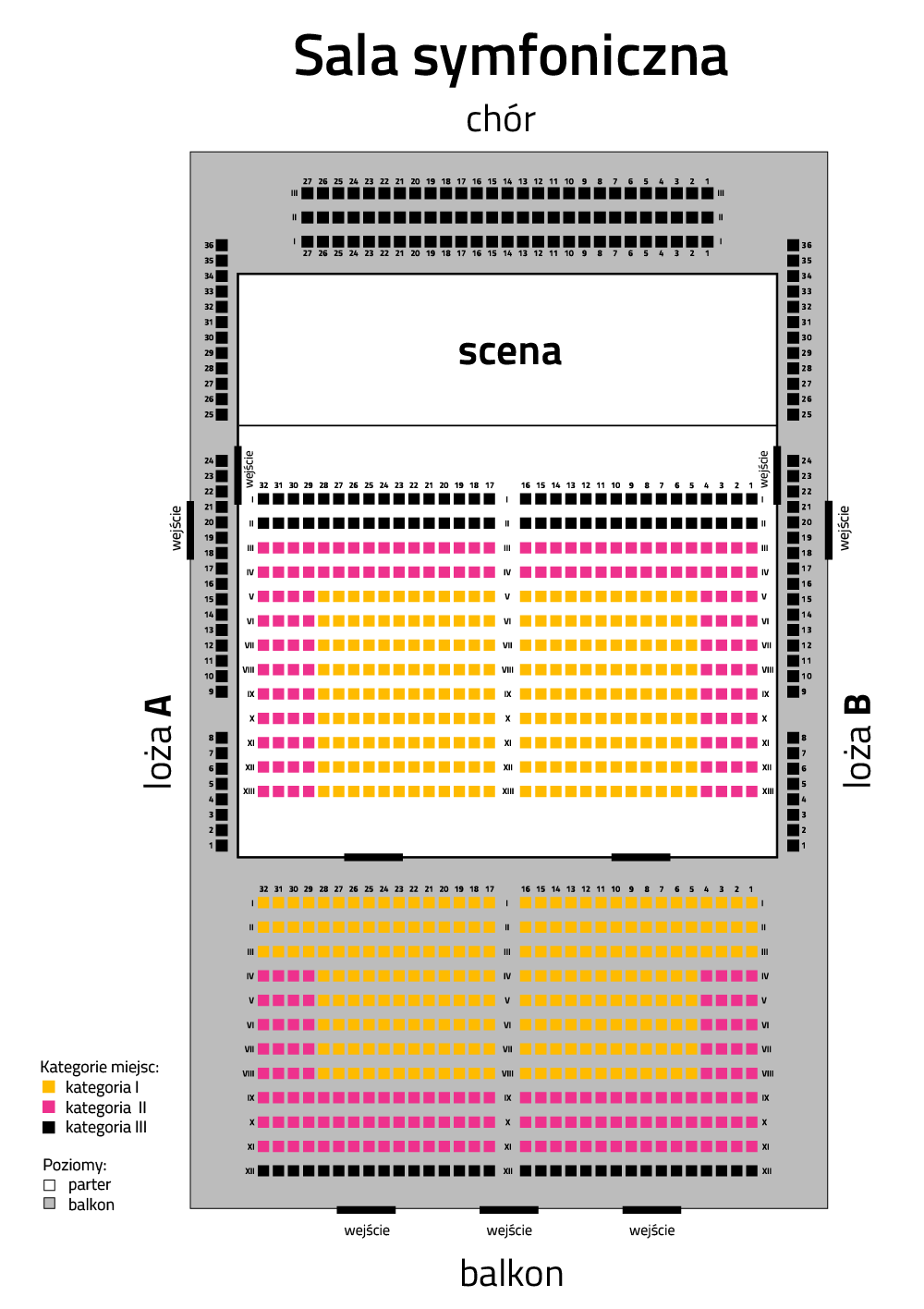A one-act opera with only two heroes. It is practically devoid of stage action, with a libretto in Hungarian by author Béla Balázs, weighing every word and music comment, building the mood without unnecessary prolonging or dazzling performance possibilities. Perhaps this particular non-typical for an opera, minimalistic and oneiric expressionistic of music by Béla Bartók had caused "Bluebeard's Castle", completed in 1911, to wait for its premiere for over six years. The opera was staged for the first time at the Hungarian State Opera in Budapest in 1918, thanks to the efforts of the conductor, Egisto Tango, who was fascinated with the composition position. Currently, the piece is often presented in the concert version.
The story is filled with symbols, as an intimate journey through the human soul – also though the nooks and crannies, which, as it turns out, we would prefer not to know. The opera’s action takes place in an old dark castle to which Bluebeard arrives with his young wife, Judith. The woman, frightened by the darkness prevailing in the castle, wants to let in a little light inside and warm up the damp walls, so she asks her husband to open one of the doors of the castle. Bluebeard initially refuses, however, after subsequent demands he succumbs to his wife’s request and opens the first gate. The chamber behind them turns out to be ... a torture chamber. Still led by the desire to light up the darkness of the castle, and perhaps curiosity around the mysterious past of her husband, Judith asks for the opening of all seven gates. Behind them there are the armory, the treasury, the garden and the vast estate of Bluebeard. Judith, however, notices blood in all these seemingly beautiful spaces. One of the most mysterious and poignant opera scenes, especially in terms of music, takes place by the lake of tears hidden behind the sixth door. The finale is the last, seventh chamber in which three earlier wives of Bluebeard are hidden. Despite her pleas, the young wife, adorned with a crown and jewels from the treasury, is placed with her predecessors, and all the gates of the castle are closed again.
Exhibition available during event:
Wystawa malarstwa free | Maggie PiuWystawa obrazów i grafik Maggie Piu to podróż w krainę wyidealizowanego Piękna. Autorka nie ukrywa, że chce w odbiorcy wzbudzić te emocje, które przez tzw. sztukę współczesną były wypierane, więc zamiast poczucia lęku czy brzydoty chce wzbudzić poczucie PIĘKNA, MIŁOŚCI, ZACHWYTU. Sztuka nie musi boleć. To co przetrwało przez stulecia, to właśnie piękno i kunszt ludzkich dzieł, zarówno w malarstwie czy rzeźbie, jak architekturze i innych dziedzinach sztuki. Maggie Piu jest niczym bohater powieści „Pachnidło” Jan Baptysta Grenouille, który obsesyjnie chce zatrzymać i doskonalić coś nieuchwytnego, ale w przeciwieństwie do niego Maggie Piu nie uśmierca kobiet, wręcz przeciwnie obsesyjnie obdarza je doskonałością i daje im nieśmiertelność.
Maggie Piu tworzy w cyklach. Każda z serii obrazów jest poświęcona konkretnemu tematowi, chociaż serie łączą się ze sobą płynnie, przechodzą jedna w drugą. Bazą jest zawsze KOBIETA, zmienia się kontekst, ornament, format. Obrazy artystki są czytelne w przekazie, ale pojawiają się w nich symbole, które przemyca, by nie była to tylko sztuka dekoracyjna, ale też pretekst do kreatywnego myślenia i poszukiwań kulturowych.
Na wystawie zobaczymy między innymi obrazy z serii „POP-DIVY”, gdzie inspiracją była opera, a w rolę głównych bohaterek wcielają się prawdziwe kobiety ze świata współczesnego filmu czy muzyki, jak chociażby Jennifer Lopez w roli Carmen.
Prezentowany będzie również cykl obrazów inspirowanych kulturami świata, haftów i tatuaży „FREEWOLNE PASTERECZKI”, gdzie Maggie Piu przemyca symbolikę polskich obyczajów; ta seria powstała w 100-letnią rocznicę uzyskania przez Polki praw wyborczych po odzyskaniu Niepodległości, stąd ten przewrotny tytuł, który można odczytać jako interferencję pojęć „wolność” i „frywolność”, według Maggie wolność słowa i wolność myśli. Zobaczymy również obrazy inspirowane światem mody pod ogólnym tytułem „FASHION GAMES”, gdzie królują charakterystyczne akcenty czołowych marek modowych.
Podsumowując, będzie to podróż bardzo kobieca, ale interesująca również dla mężczyzn, gdzie KOBIETY będą mogły zobaczyć doskonałość swojej płci, a mężczyźni, mimo ich braku na obrazach, odnajdą obiekty swoich westchnień.
DETAILS
Bartók | Bluebeard's Castle
07-06-2019 19:00

Symphony HallFilharmonia im. Mieczysława Karłowicza w Szczecinie
ul. Małopolska 48
70-515 Szczecin

